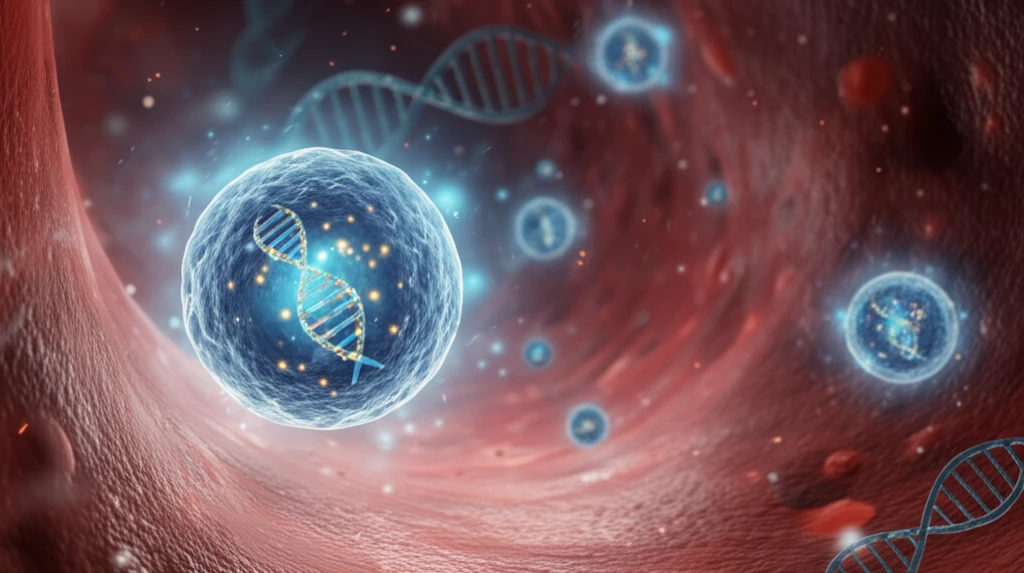
Unlock Early Disease Detection: How Extracellular Vesicles and miRNA are Changing Diagnostics
"Dive into the world of extracellular vesicles (EVs) and microRNAs (miRNAs) and discover their revolutionary role in early disease diagnosis, offering a glimpse into the future of personalized medicine."
The field of medical diagnostics is constantly evolving, driven by the need for earlier and more accurate disease detection. Among the most promising advancements are studies focused on extracellular vesicles (EVs), nanosized vesicles secreted by cells. These vesicles, including exosomes, are not merely cellular waste products; they are active messengers, carrying a diverse cargo of molecules, including microRNAs (miRNAs), that reflect the state of their parent cells.
MicroRNAs, small non-coding RNA molecules, play a crucial role in regulating gene expression and are increasingly recognized as key biomarkers for various diseases. The fact that EVs contain miRNAs derived from their cells of origin makes them particularly attractive for diagnostic purposes. Moreover, EVs are found in abundance in bodily fluids, such as blood, urine, and breast milk, making them accessible for non-invasive analysis.
Traditional methods for miRNA detection often involve complex and time-consuming procedures, including cell lysis, RNA isolation, and PCR amplification. However, recent innovations are streamlining this process, enabling simpler, faster, and more accurate detection of specific miRNAs within EVs. One such innovation is the use of molecular beacons (MBs), nanosized oligonucleotide probes that can detect miRNAs in situ, directly within the EVs, opening up new avenues for early and precise disease diagnosis.
What are Extracellular Vesicles (EVs) and Why are They Important for Early Disease Detection?

Extracellular vesicles (EVs) are membrane-bound vesicles secreted by cells that play a crucial role in intercellular communication. They are essentially tiny packages containing proteins, lipids, and nucleic acids, including microRNAs (miRNAs). These vesicles are released by nearly all cell types and can be found in various bodily fluids, such as blood, urine, saliva, and breast milk, making them accessible for diagnostic purposes. EVs are categorized into different subtypes based on their size and biogenesis, including exosomes (30-100nm), microvesicles (100-1000nm), and apoptotic bodies (50-5000nm).
- Accessibility: EVs are readily accessible in bodily fluids, allowing for non-invasive diagnostic procedures.
- Information Richness: EVs contain a wealth of information about the cells from which they originate, providing a snapshot of cellular activity and health.
- Stability: miRNAs within EVs are protected from degradation, ensuring reliable detection and analysis.
- Disease Specificity: Certain miRNA signatures are associated with specific diseases, enabling early and accurate diagnosis.
- Early Detection: Changes in EV miRNA profiles can often be detected before clinical symptoms appear, offering the potential for early intervention.
The Future of Diagnostics: EVs and miRNAs as Key Players
As research into extracellular vesicles and their miRNA cargo continues to advance, the potential for transforming disease diagnostics becomes increasingly clear. The development of innovative detection methods, such as molecular beacons, is streamlining the process of miRNA analysis and paving the way for more accessible and accurate early disease detection. By harnessing the power of EVs and miRNAs, we can move towards a future of personalized medicine, where diseases are detected early, treatments are tailored to the individual, and patient outcomes are significantly improved.
